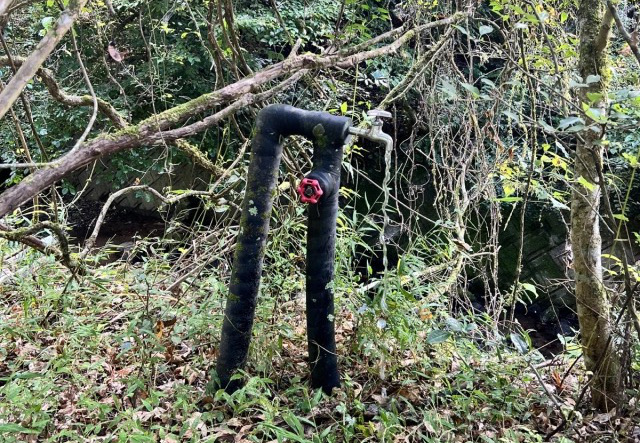
Dare we drink the water from this strange source we discovered on our property?
Last year, we bought a house in the Japanese countryside for US$9,100, and since then we’ve been making all sorts of unusual discoveries involving mountaintop views and visits from local raccoons.
Our latest discovery was a mysterious tap, which we found after clearing out some overgrown bushes next to the house.
“Tap posts”, as standalone outdoor taps are officially known, usually consist of a tap attached to a vertical wooden plank, not a weird pipe-looking protrusion like this one. Our reporter Go Hatori had never seen anything like it before, and being the curious countryside explorer he is, he wasted no time in turning the faucet on, but what came out was brown, muddy looking water.
▼ The SoraHouse is yet to be connected to a water supply, so none of the other taps on the property work.
Finding a source of running water on the property that might be fit for consumption was an exciting prospect for our ever-thirsty renovation team, but first they needed to solve the mystery of where the water was coming from.
It was clear to everyone that the tap wasn’t connected to the nearby river, so everyone’s next best guess was that it might be coming from some sort of well. Our boss, Yoshio, however, was able to speak to the former owner of the property, who told him that what they’d found wasn’t well water, but mountain spring water.
Apparently, this water is free to use, and the other houses nearby also have similar taps giving them access to the water source. The SoraHouse is located halfway up a mountain, and according to the previous owner, a factory at the bottom of the mountain sterilises the very same water and sells it as natural mineral water.
This was an unexpected perk we hadn’t been told about when we bought the property, and seeing as it was spring water, we figured it must’ve come out brown at first due to the pipes being dirty and unused for so long.
▼ So we let the water flow for a while until it came out clean, and decided to test its safety with a water-testing kit.
We purchased the test kit from Amazon Japan, and though it was designed to test well water, it would still do the trick with our outdoor tap, as it would measure pH, iron, total hardness, chemical oxygen demand (COD), and nitrous acid levels.
As a result of measuring the levels according to the instruction manual, we discovered that all these levels fell in the “no problem” range, which was all the reassurance the team needed to surmise that the water should be safe to drink!
All that was left to do now was drink the water, so with their hearts pounding, Go first took a sip. His evaluation?
▼ “Delicious!”
What about Yoshio?
▼ “Yes, this is water!”
And our trusty professional from local construction company Hobien?
▼ “No problem!”
Our three musketeers are happy to report that none of them had any digestive issues after drinking the water, but after reading the PDF manual for the well water test, they realised they’d skipped past this rather important piece of information:
“It is not possible to judge whether the water tested is drinkable or not based on these five items [pH, iron, total hardness, COD, and nitrous acid] alone. This is because it is not possible to determine whether the water is contaminated with metal ions or other chemical substances from chemical plants, construction sites, mines, or the natural world, or whether bacteria such as E. coli are present.
If we were to conduct an inspection for every possible situation, we would have to measure more than 50 items, and moreover, experts would have to make full use of expensive analysis equipment. ”
After doing some more research online, Go discovered that in Saitama Prefecture, where the SoraHouse is located, the public health centre tests 13 items, and the health research institute tests 51 items when conducting water surveys. The fee for public health centre testing is a very reasonable 9,740 yen (US$66.33), so an official test is now on the ever-growing to-do list for next time we’re at the SoraHouse.
Until then, Masanuki will be using the newfound running water for outdoor baths in his giant shoe.
Photos ©SoraNews24
● Want to hear about SoraNews24’s latest articles as soon as they’re published? Follow us on Facebook and Twitter!
[ Read in Japanese ]

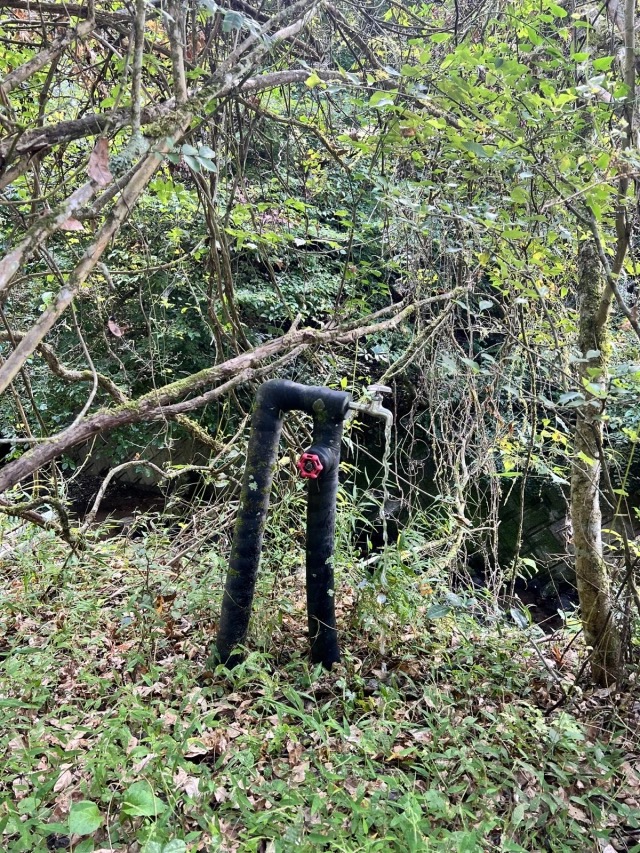
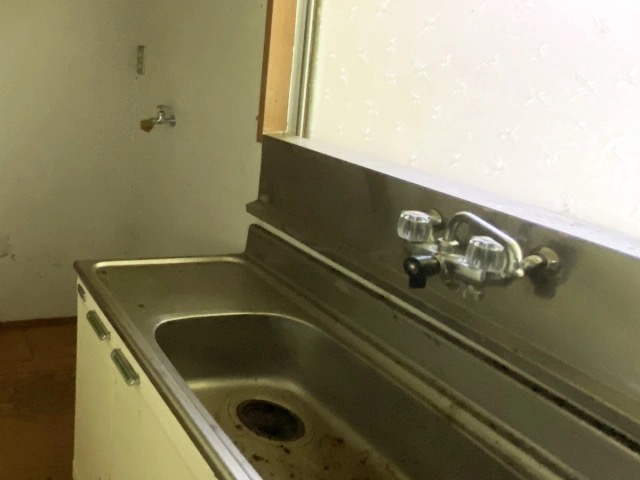
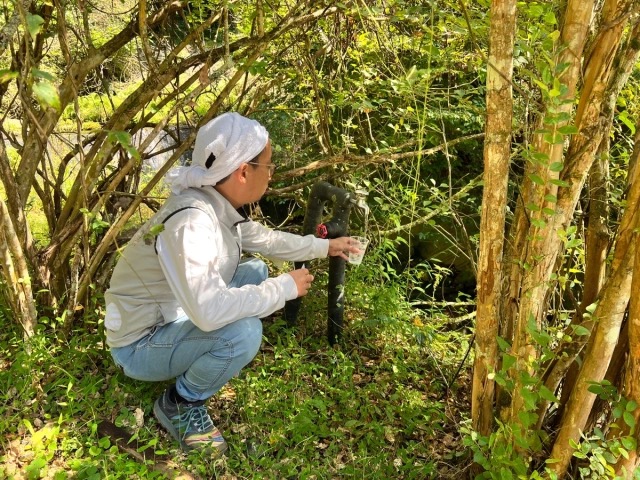
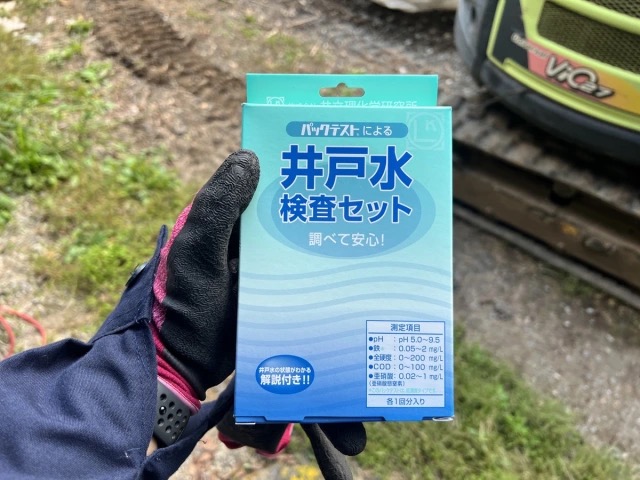
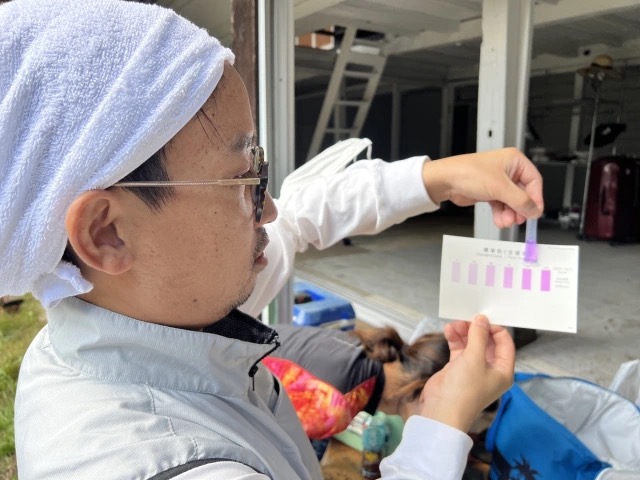
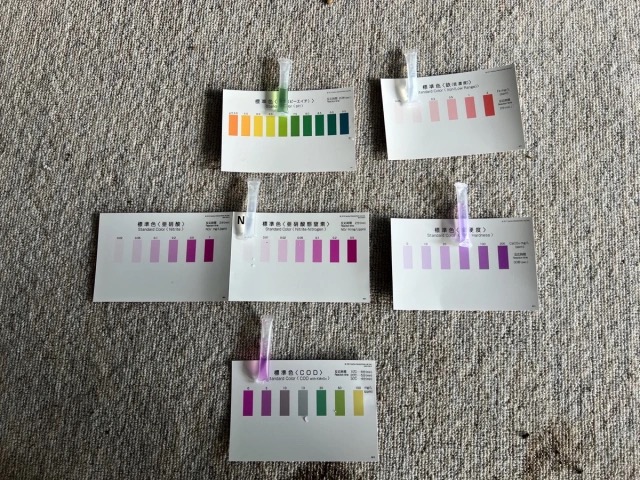
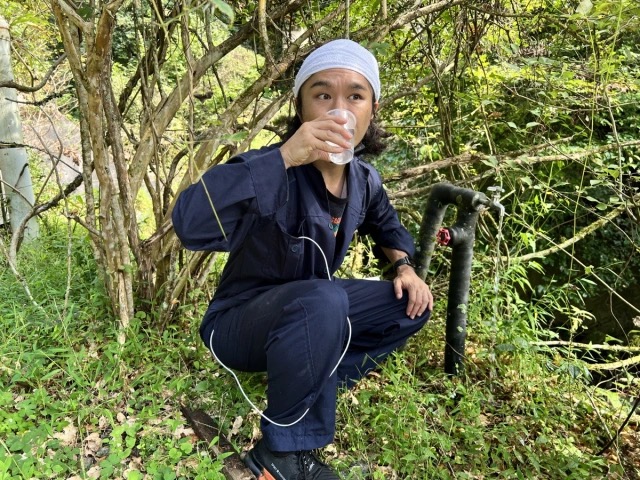
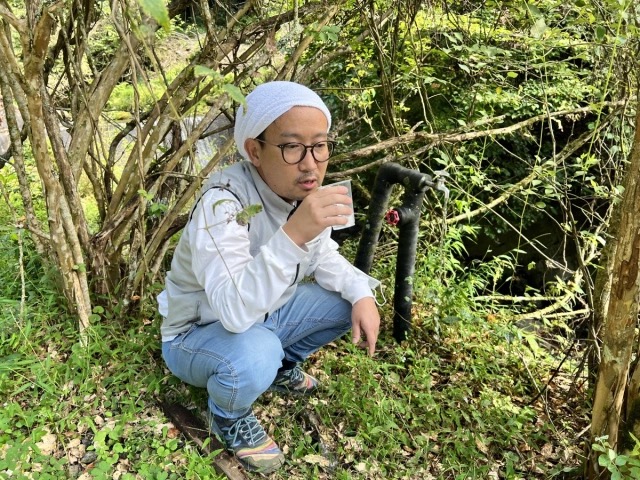
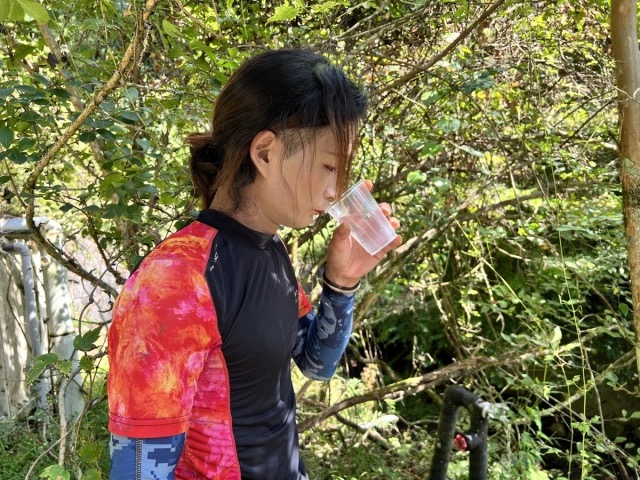
 Turning a crazy cheap country Japanese house into a home — Step 11: Dig for treasure【SoraHouse】
Turning a crazy cheap country Japanese house into a home — Step 11: Dig for treasure【SoraHouse】 New hot natural spring water at 7-Eleven proves Japanese convenience stores really are convenient
New hot natural spring water at 7-Eleven proves Japanese convenience stores really are convenient Setting up zero-cost electricity at our cheap Japanese country house so it looks less haunted
Setting up zero-cost electricity at our cheap Japanese country house so it looks less haunted Hot spring in Gunma Prefecture found to reduce COVID-19 infectivity by over 90 percent
Hot spring in Gunma Prefecture found to reduce COVID-19 infectivity by over 90 percent What happens when our team starts renovating our cheap countryside house in Japan?
What happens when our team starts renovating our cheap countryside house in Japan? Japan’s new difficult-to-drink-from beer glass protects your liver, but it’s a brutal experience
Japan’s new difficult-to-drink-from beer glass protects your liver, but it’s a brutal experience Hello, cosmetics! Clinique teams up with Hello Kitty this summer for first-time collaboration
Hello, cosmetics! Clinique teams up with Hello Kitty this summer for first-time collaboration Come play hide-and-seek on a deserted Japanese island this August and November
Come play hide-and-seek on a deserted Japanese island this August and November Nintendo history you can feel – Super NES, N64, and GameCube controllers become capsule toys
Nintendo history you can feel – Super NES, N64, and GameCube controllers become capsule toys New samurai glasses are Japan’s latest weird must-have souvenir
New samurai glasses are Japan’s latest weird must-have souvenir Doraemon found buried at sea as scene from 1993 anime becomes real life【Photos】
Doraemon found buried at sea as scene from 1993 anime becomes real life【Photos】 Infographic shows how working culture differs across the globe
Infographic shows how working culture differs across the globe New Pokémon ice cream, dessert drinks, and cool merch coming to Baskin-Robbins Japan【Pics】
New Pokémon ice cream, dessert drinks, and cool merch coming to Baskin-Robbins Japan【Pics】 Princesses, fruits, and blacksmiths: Study reveals the 30 most unusual family names in Japan
Princesses, fruits, and blacksmiths: Study reveals the 30 most unusual family names in Japan Demon Slayer: Kimetsu no Yaiba gets new roller coaster attractions and food at Universal Studios Japan
Demon Slayer: Kimetsu no Yaiba gets new roller coaster attractions and food at Universal Studios Japan “The most Delicious Cup Noodle in history” – Japan’s French Cup Noodle wins our heart【Taste test】
“The most Delicious Cup Noodle in history” – Japan’s French Cup Noodle wins our heart【Taste test】 Starbucks releases a cute Frappuccino and Unicorn Cake…but not in Japan
Starbucks releases a cute Frappuccino and Unicorn Cake…but not in Japan Kyoto Tower mascot termination reveals dark side behind cute Japanese characters
Kyoto Tower mascot termination reveals dark side behind cute Japanese characters McDonald’s Japan’s Soft Twist Tower: A phantom ice cream only sold at select branches
McDonald’s Japan’s Soft Twist Tower: A phantom ice cream only sold at select branches Yabai Ramen: What makes this Japanese ramen so dangerous?
Yabai Ramen: What makes this Japanese ramen so dangerous? Finally! Nintendo Japan expands Switch 8-bit controller sales to everybody, Online member or not
Finally! Nintendo Japan expands Switch 8-bit controller sales to everybody, Online member or not Japanese government wants to build luxury resorts in all national parks for foreign tourists
Japanese government wants to build luxury resorts in all national parks for foreign tourists To combat declining birth rate, Japan to begin offering “Breeding Visas” to foreigners
To combat declining birth rate, Japan to begin offering “Breeding Visas” to foreigners 10 things you should buy at 7-Eleven in Japan
10 things you should buy at 7-Eleven in Japan Studio Ghibli releases anime heroine cosplay dresses that are super comfy to wear
Studio Ghibli releases anime heroine cosplay dresses that are super comfy to wear Woman charged for driving suitcase without a license in Osaka
Woman charged for driving suitcase without a license in Osaka Studio Ghibli unveils My Neighbour Totoro miniature house model
Studio Ghibli unveils My Neighbour Totoro miniature house model Kyoto experiencing problems with foreign tourists not paying for bus fares, but not on purpose
Kyoto experiencing problems with foreign tourists not paying for bus fares, but not on purpose Fighting mild hunger with a Japanese soda that turns into jelly in the stomach【Taste test】
Fighting mild hunger with a Japanese soda that turns into jelly in the stomach【Taste test】 Studio Ghibli’s Howl’s Moving Castle tapestry unveiled in Japan for first time
Studio Ghibli’s Howl’s Moving Castle tapestry unveiled in Japan for first time McDonald’s new Happy Meals offer up cute and practical Sanrio lifestyle goods
McDonald’s new Happy Meals offer up cute and practical Sanrio lifestyle goods Sales of Japan’s most convenient train ticket/shopping payment cards suspended indefinitely
Sales of Japan’s most convenient train ticket/shopping payment cards suspended indefinitely Sold-out Studio Ghibli desktop humidifiers are back so Totoro can help you through the dry season
Sold-out Studio Ghibli desktop humidifiers are back so Totoro can help you through the dry season Japanese government to make first change to romanization spelling rules since the 1950s
Japanese government to make first change to romanization spelling rules since the 1950s Foreigner’s request for help in Tokyo makes us sad for the state of society
Foreigner’s request for help in Tokyo makes us sad for the state of society Ghibli founders Toshio Suzuki and Hayao Miyazaki contribute to Japanese whisky Totoro label design
Ghibli founders Toshio Suzuki and Hayao Miyazaki contribute to Japanese whisky Totoro label design Tokyo’s most famous Starbucks is closed
Tokyo’s most famous Starbucks is closed Does Tottori really have the most delicious-tasting tap water in all of Japan?【Taste test】
Does Tottori really have the most delicious-tasting tap water in all of Japan?【Taste test】 An unexpected visitor stops by our cheap Japanese house in the countryside【SoraHouse】
An unexpected visitor stops by our cheap Japanese house in the countryside【SoraHouse】 Turning a crazy cheap country Japanese house into a home — Step 9: Chestnuts【SoraHouse】
Turning a crazy cheap country Japanese house into a home — Step 9: Chestnuts【SoraHouse】 44 bubble machines on the roof of a Japanese country house is our idea of renovating【Video】
44 bubble machines on the roof of a Japanese country house is our idea of renovating【Video】 We accidentally turned our cheap country house into a “gaming house” for Christmas【SoraHouse】
We accidentally turned our cheap country house into a “gaming house” for Christmas【SoraHouse】 Japanese start-up invents faucet gadget to reduce water usage by up to 95 percent
Japanese start-up invents faucet gadget to reduce water usage by up to 95 percent Four train stations in Tokyo installed free groundwater pumps available 24-7
Four train stations in Tokyo installed free groundwater pumps available 24-7 Researchers closing in on “Submersible Computers” that can be cooled in the ocean
Researchers closing in on “Submersible Computers” that can be cooled in the ocean Clean drinking water makes stalking more romantic, manga schoolgirl ad wants us to remember
Clean drinking water makes stalking more romantic, manga schoolgirl ad wants us to remember Turning a crazy cheap country Japanese house into a home — Step 2: Clearing out weeds【SoraHouse】
Turning a crazy cheap country Japanese house into a home — Step 2: Clearing out weeds【SoraHouse】 Why your cat hates baths, but is fascinated by the bathtub
Why your cat hates baths, but is fascinated by the bathtub Hey, does this Calpis taste funny? Taste-testing the new Calpis Water【Taste test】
Hey, does this Calpis taste funny? Taste-testing the new Calpis Water【Taste test】 Toyama Prefectural University able to locate potential COVID-19 clusters from raw sewage
Toyama Prefectural University able to locate potential COVID-19 clusters from raw sewage Synthetic fossil fuels made from light, water, and CO2 in the air tested in Osaka
Synthetic fossil fuels made from light, water, and CO2 in the air tested in Osaka Suntory explains the simple science behind how it makes its amazing clear tea beverages【Video】
Suntory explains the simple science behind how it makes its amazing clear tea beverages【Video】 Using Starbucks Japan’s hot water to make ochazuke, one of Japan’s best comfort foods
Using Starbucks Japan’s hot water to make ochazuke, one of Japan’s best comfort foods We made a 98-foot-long string telephone at our Japanese countryside house, but does it work?
We made a 98-foot-long string telephone at our Japanese countryside house, but does it work?
Leave a Reply